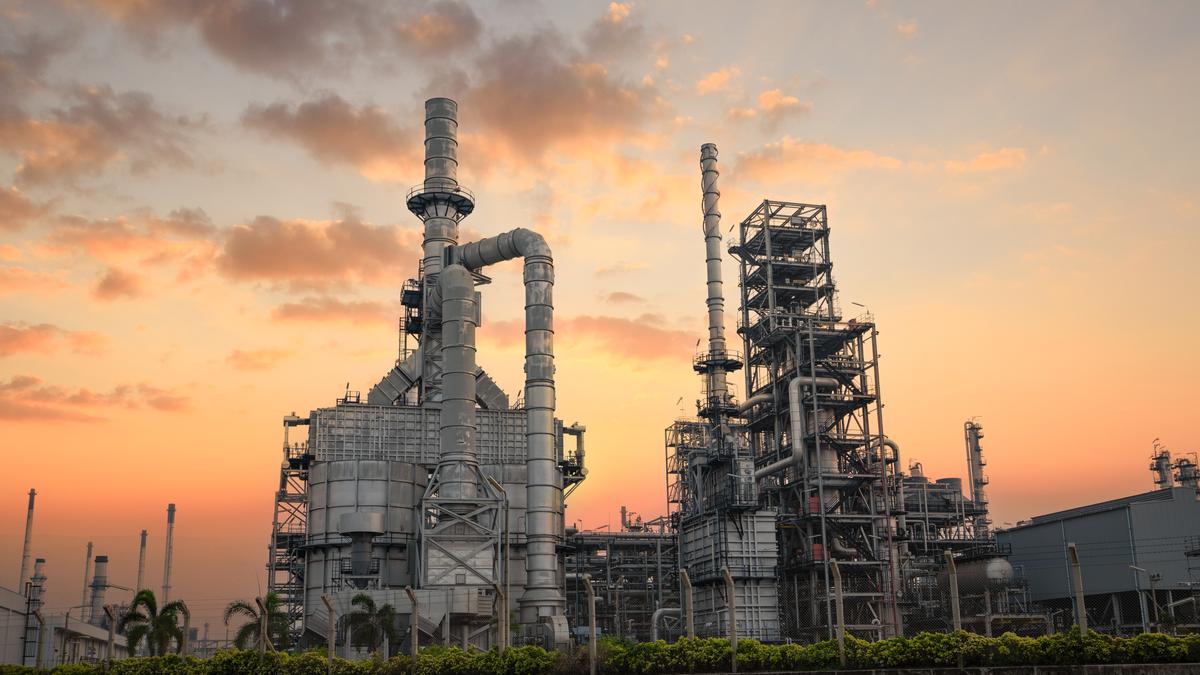India’s GDP growth slowed to 4.4% between October to December 2022 quarter from 6.3% in the second quarter (Q2) of 2022-23 as per the National Statistical Office (NSO), which retained its full year growth estimate for the economy at 7%, despite revising 2021-22 GDP rise higher to 9.1% from 8.7% earlier reckoned.
The NSO also revised the growth contraction numbers for the COVID-hit year of 2020-21, pegging the overall hit to the economy that year at -5.7% as per Second Revised Estimates, significantly lesser than its first provisional estimate at -7.3%.
The Gross Value Added (GVA) in the economy grew 4.6% in the third quarter (Q3) of 2022-23, down from 5.5% in Q2, with manufacturing continuing to shrink for the second quarter, albeit at a slower pace of 1.1% compared to 3.6% in Q2.
Economists termed the manufacturing sector’s persistent slack a negative surprise that brought Q3 growth levels lower than their projections. Chief Economic Advisor V Anantha Nageswaran, however, asserted that the 4.4% GDP growth print is “also because of the revisions made to the previous years when the base has gone up”.
“The growth momentum has carried… it is the base effect that has given us a 4.4% [growth rate] Since the data is not seasonally adjusted, quarter on quarter growth trends should be interpreted with care,” he averred, adding that the economy’s momentum seems strong and stable and “there is nothing to suggest that we won’t be able to get” to the 7% real GDP growth mark in 2022-23.
Independent economists like ICRA’s Aditi Nayar said the fact that the NSO has persisted with the 7% growth hopes for this year as projected in early January, implies that GDP growth will improve to 5.1% in the ongoing final quarter of the year, which is higher than “current expectations”.
While acknowledging the math, the CEA pointed out that even if the 4.4% growth rate of Q3 persists in the January to March period (Q4), the annual growth rate will be around 6.8%.
“The second advance estimates for 2022-23 have retained the overall annual growth at 7% but revised [up] the external sector contribution to this overall growth, which was counterbalanced by a fall in the domestic demand components, especially in private and government consumption expenditure. Thus, domestic demand appears to have weakened relative to the earlier estimate,” said DK Srivastava, chief policy advisor at EY India.
Cumulatively, the first nine months of 2022-23 have now reported a GVA uptick of 7.2% compared to 10.7% in the same period of 2021-22, while GDP is estimated to have risen 7.7% compared to 11.1% in April to December 2021.
Sectoral dichotomies and sharp revisions
Following the data revisions for the past two years, the cumulated average real GDP growth rate over the period 2019-20 to 2022-23 is 3.2%, Mr. Srivastava said. “From a long-term viewpoint, Covid has caused a reduction of nearly 4% points as compared to the potential growth of 7%,” he noted.
Overall GVA growth in Q1 has been revised lower from the 12.7% reckoned earlier to 12.1%, while the Q2 GVA uptick has been pared marginally from 5.6% estimated earlier to 5.5%. GDP growth for the first quarter of 2022-23 has been revised down to 13.2% from 13.5% estimated earlier, but Q2 GDP growth estimates were left unchanged.
Manufacturing and Mining GVA contractions for Q2 have been upgraded by the NSO from its earlier estimates of a 4.3% and 2.8% shrinkage in the two sectors, respectively. Agriculture GVA growth, on the other hand, has been downgraded sharply for Q1 as well as Q2. Earlier estimates of 4.5% and 4.6% GVA growth in these quarters, have been slashed to 2.5% (Q1) and 2.4% (Q2), respectively.
Thanks to the revisions, Q3 Mining and quarrying GVA recovered from a 0.4% contraction in Q2 to grow 3.7% in Q3, while Agriculture, Forestry and Fishing GVA accelerated to 3.7%, the fastest pace of growth this year.
Construction GVA growth also sped to 8.4% in Q3 from 5.8% in Q2 (revised lower from earlier estimate of 6.6%), as did Electricity, Gas, Water Supply and other Utility Services (up 8.2% in Q3 from 6% in Q2).
However, three other major industry heads recorded lower GVA growth in Q3 from Q2, contributing to the drag on overall growth, including the contact-intensive Trade, Hotels, Transport, Communication and Services related to Broadcasting sectors, which grew at 9.7% compared to 15.6% in Q2.
The share of private consumption expenditure in the GDP rose to the highest level this year in Q3, which included the festive season, at 61.6%, but it was lower than the 63% share in the same quarter a year earlier.
Rajani Sinha, CARE Ratings’ chief economist, expressed greater concern about the fall in India’s investment to GDP ratio to around 32 in Q3 from 34 in Q2, and said it is critical that domestic demand should accelerate in the months ahead as external demand conditions remain weak.
Industry representatives said the slowing growth numbers are partly a sign of flagging global growth impulses and rising interest rates.
“The numbers for the third quarter point towards the need for a pause in any further increase in the benchmark policy interest rates by the Reserve Bank of India as high borrowing costs do have an effect in sectors like automobiles, housing and high-end consumer durables,” said ASSOCHAM Secretary General Deepak Sood.
Public Administration, Defence & Other Services’ GVA growth faltered from 5.6% in Q2 to just 2% in Q3, while Financial, Real Estate & Professional Services slowed from 7.1% in Q2 to 5.8% in Q3.





